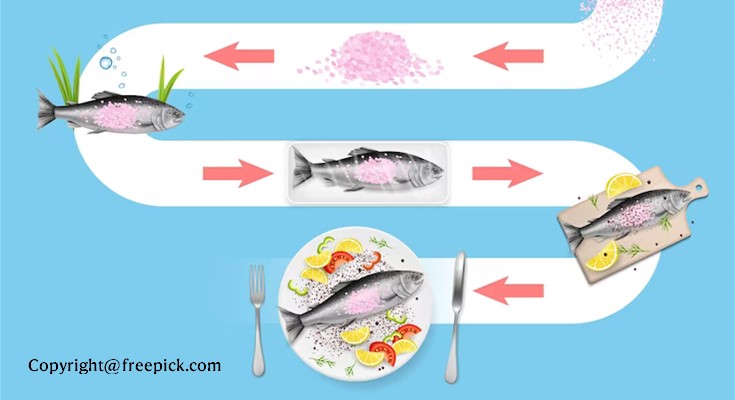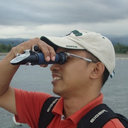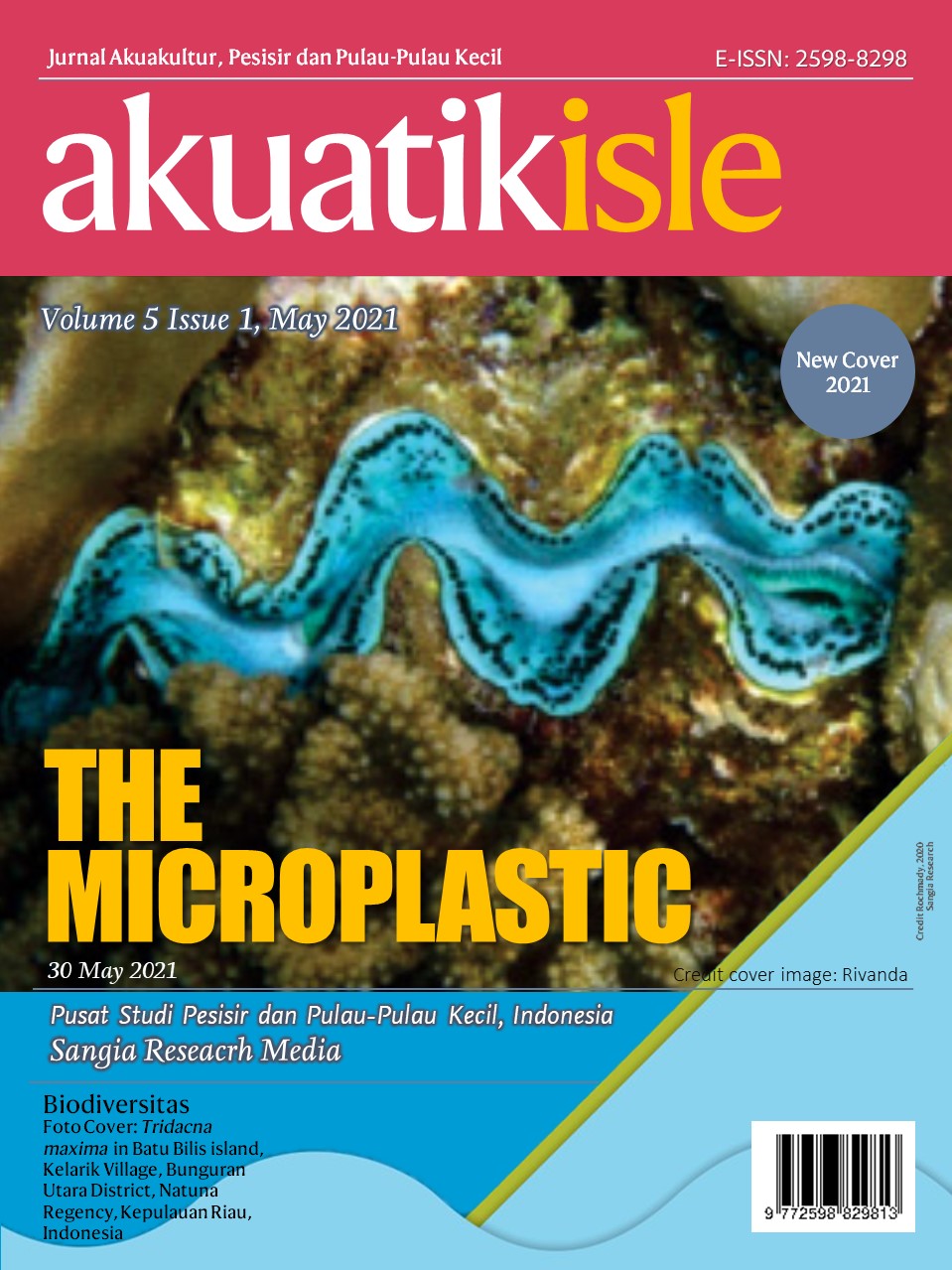Akuatikisle: Jurnal Akuakultur, Pesisir dan Pulau-Pulau Kecil
Perspective
Microplastic: pollution issue and seafood security
Highlights
Generate NLP AI by Wizdam ID.
Abstract
At the first time, plastic materials were produced to facilitate various activities of human life. Plastic materials that are flexible and durable have been used by humans to meet various needs to support their daily activities. Starting from human activities from waking up to going back to sleep, nowadays it cannot be separated from the use of plastic materials. This then makes humans "addicted" to plastic materials. It is as if human life cannot be separated from the use of plastic materials. Various research results in the field of pollution both on land and the sea, plastic materials that are not managed properly can contaminate human life, either directly or indirectly, to food sources, especially food from the sea.
Keywords
Introduction
Section snippets
Material and Methods
Materials and methods from the full-text PDF of this article cannot be displayed.
Results
Results from the full-text PDF of this article cannot be displayed.
Discussion
Discussion from the full-text PDF of this article cannot be displayed.
Conclusions
Conclusions from the full-text PDF of this article cannot be displayed.
Acknowledgment
Acknowledgment from the full-text PDF of this article cannot be displayed.
Competing interest
The authors declare that they have no known competing financial interests or personal relationships that could have appeared to influence the work reported in this paper.
Conflict of interest
The authors declare that the research was conducted in the absence of any commercial or financial relationships that could be construed as a potential conflict of interest.
Ethical approval acknowledgements
No ethical approval required for this article. All procedures followed were in accordance with the ethical standards of the responsible committee on human experimentation (institutional and national) and with the Helsinki Declaration of 1975, as revised in 2008 (5)
Supplementary files
Data sharing not applicable to this article as no datasets were generated or analysed during the current study, and/or contains supplementary material, which is available to authorized users.
References (19)
Arias-Andres, M., Rojas-Jimenez, K. & Grossart, H.-P. 2019. Collateral effects of microplastic pollution on aquatic microorganisms: an ecological perspective. TrAC Trends in Analytical Chemistry. 112:234–240. DOI: https://doi.org/10.1016/j.trac.2018.11.041.
Bouwmeester, H., Hollman, P.C.H. & Peters, R.J.B. 2015. Potential health impact of environmentally released micro-and nanoplastics in the human food production chain: experiences from nanotoxicology. Environmental Science & Technology. 49(15):8932–8947.DOI: https://doi.org/10.1021/acs.est.5b01090.
Cole, M. & Galloway, T.S. 2015. Ingestion of Nanoplastics and Microplastics by Pacific Oyster Larvae. Environmental Science and Technology. 49(24):14625–14632. DOI: https://doi.org/10.1021/acs.est.5b04099.
Cordova, M.R., Purwiyanto, A.I.S. & Suteja, Y. 2019. Abundance and characteristics of microplastics in the northern coastal waters of Surabaya, Indonesia. Marine Pollution Bulletin. 142:183–188. DOI: https://doi.org/10.1016/j.marpolbul.2019.03.040.
Chalmin, P. 2019. The history of plastics: from the Capitol to the Tarpeian Rock. Field actions science reports. The Journal of Field Actions, (Special Issue 19), 6-11.
FAO, 1996. Declaration on world food security. World Food Summit, FAO, Rome.
Fathoniah, I. & Patria, M.P. 2021. Abundance of microplastic in green mussel Perna viridis, water, and sediment in Kamal Muara, Jakarta Bay. In: Journal of Physics: Conference Series. 1725: p.12042. DOI: https://doi.org/10.1088/1742-6596/1725/1/012042.
Gilbert, M. 2017. Plastics materials: Introduction and historical development. In Brydson's Plastics Materials. pp. 1-18. Butterworth-Heinemann. DOI: https://doi.org/10.1016/B978-0-323-35824-8.00001-3.
Geyer, R. 2020. A brief history of plastics. In Mare Plasticum-The Plastic Sea. pp. 31-47. DOI: https://doi.org/10.1007/978-3-030-38945-1_2.
Hollman, P.C.H., Bouwmeester, H. & Peters, R.J.B. 2013. Microplastics in aquatic food chain: sources, measurement, occurrence and potential health risks. (No. 2013.003). Rikilt-Institute of Food Safety.
Manalu, A.A. 2017. Kelimpahan mikroplastik di teluk Jakarta. [Tesis]. Bogor Agricultural University (IPB). Bogor.
Mao, Y., Ai, H., Chen, Y., Zhang, Z., Zeng, P., Kang, L., Li, W., Gu, W., He, Q. & Li, H. 2018. Phytoplankton response to polystyrene microplastics: perspective from an entire growth period. Chemosphere. 208:59–68. DOI: https://doi.org/10.1016/ j.chemosphere.2018.05.170.
Murphy, F., Ewins, C., Carbonnier, F. & Quinn, B. 2016. Wastewater treatment works (WwTW) as a source of microplastics in the aquatic environment. Environmental Science & Technology. 50(11): 5800–5808. DOI: https://doi.org/10.1021/acs.est.5b05416.
Rahim, N.F., Yaqin, K. & Rukminasari, N. 2020. Effect of microplastic on green mussel, Perna viridis: experimental approach. Jurnal Ilmu Kelautan SPERMONDE. 5(2):89–94. DOI: https://doi.org/10.20956/jiks.v5i2.8937.
Rochman, C.M., Kross, S.M., Armstrong, J.B., Bogan, M.T., Darling, E.S., Green, S.J., Smyth, A.R., & Veríssimo, D. 2015. Scientific evidence supports a ban on microbeads. Environmental Science & Technology. 49(18): 10759–10761. DOI: https://doi.org/10.1021/acs.est.5b03909.
Talley, T. S., Venuti, N., & Whelan, R. 2020. Natural history matters: Plastics in estuarine fish and sediments at the mouth of an urban watershed. Plos One, 15(3), e0229777. DOI: https://doi.org/10.1371/journal.pone.0229777.
Wright, S.L. & Kelly, F.J. 2017. Plastic and human health: a micro issue? Environmental Science & Technology. 51(12):6634–6647. DOI: https://doi.org/10.1021/acs.est.7b00423.
Yaqin, K. 2020. Mikroplastik ancam ketahanan pangan laut kita. Trubun Timur. p. 15.
Yona, D., Nandaningtyas, Z., Siagian, B.D.M., Sari, S.H.J., Yunanto, A., Iranawati, F., Fuad, M.A.Z., Putri, J.C.A. & Maharani, M.D. 2019. Microplastic in The Bali Strait : Comparison of Two Sampling Methods. ILMU KELAUTAN: Indonesian Journal of Marine Sciences. 24(4): 153-158. DOI: https://doi.org/10.14710/ik.ijms.24.4.153-158.
Bibliographic Information
Cite this article as:
-
Submitted
11 March 2021 -
Accepted
28 May 2021 -
Published
30 May 2021 -
Version of record
27 June 2021 -
Issue date
30 May 2021
-
Academic subject
Environmental Science; Marine Sciences
Copyright
Sangia Advertisement
At the first time, plastic materials were produced to facilitate various activities of human life. Plastic materials that are flexible and durable pollution both on land and the sea. Plastic materials that are not managed properly can contaminate human and life, either directly or indirectly to food sources, especially food from the sea.
Copyright © 2021 Khusnul Yaqin. Sangia Research Media and Publishing. Production and hosting by Sangia (SRM™).  This work is licensed under a Creative Commons Attribution-ShareAlike 4.0 International License.
This work is licensed under a Creative Commons Attribution-ShareAlike 4.0 International License.
Disclaimer: All claims expressed in this article are solely those of the authors and do not necessarily represent those of their affiliated organizations, or those of the publisher, the editors and the reviewers. Any product that may be evaluated in this article or claim that may be made by its manufacturer is not guaranteed or endorsed by the publisher.
Comments on this article
By submitting a comment you agree to abide by our Terms and Community Guidelines. If you find something abusive or that does not comply with our terms or guidelines please flag it as inappropriate.







